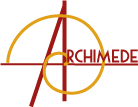Noms et corps divins dans les textes bibliques : une approche par le genre
Auteur
Stéphanie ANTHONIOZ, Professeure en Ancien Testament, Université catholique de Lille, UMR 8167 Orient et Méditerranée (« Mondes sémitiques »)
Stephanie.anthonioz[at]univ-catholille.fr
Télécharger le texte complet - Download the full text
DOI https://doi.org/10.47245/archimede.0008.ds1.03




